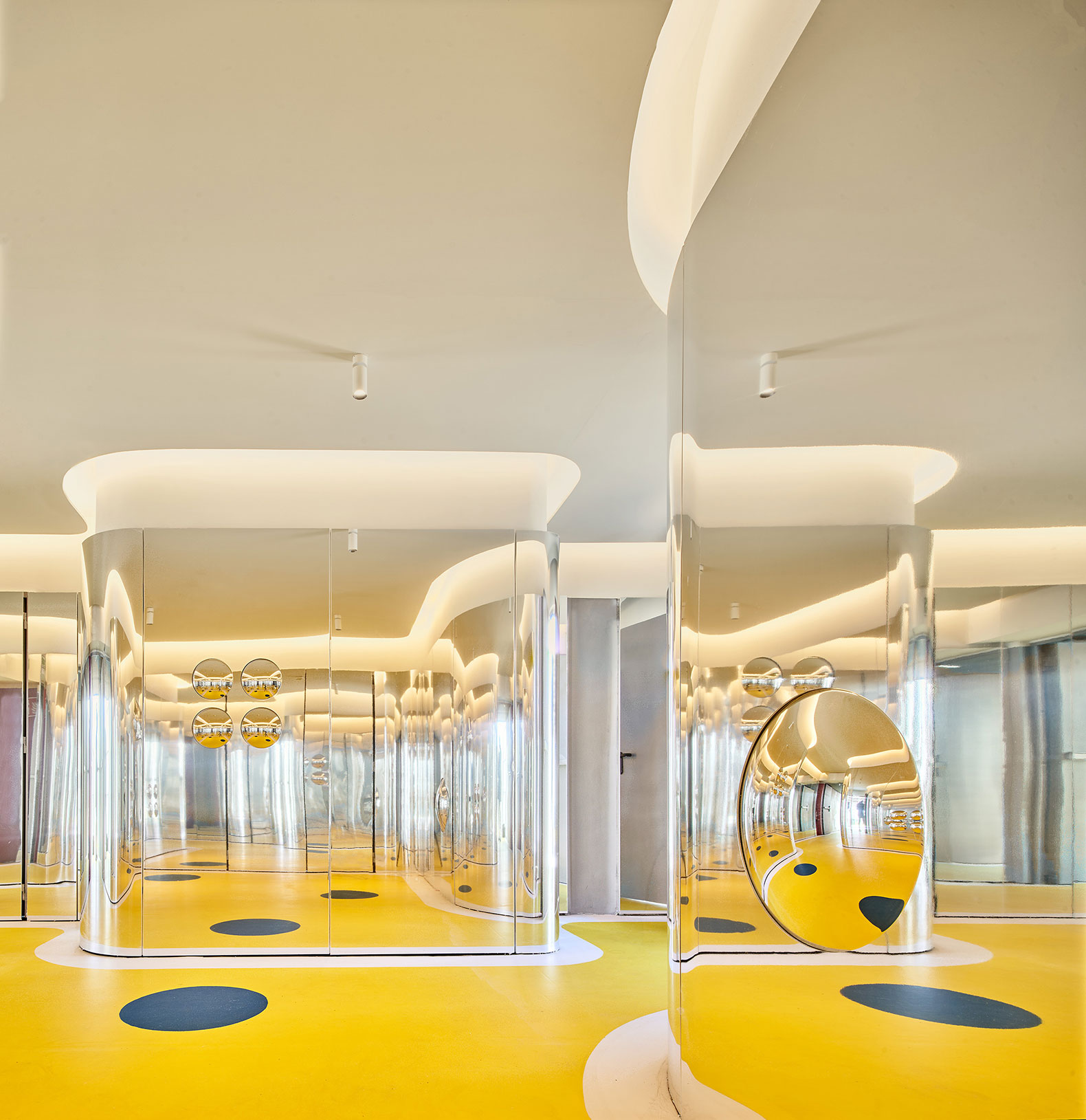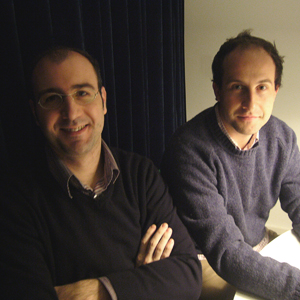The surface of the garden is divided into two parts. The first, next to O'Donnell Street, contains a small stage, swings, slides, a labyrinth, and activities more suitable for teenagers, such as benches for sitting and chatting, a ping-pong table, and a football goal. The second, more elongated area overlooks the garden square and has a large double-height table, a table football table, baskets, and a small mini-golf course, among other activities. Both areas are connected by a mirrored vestibule.
A semi-transparent mesh enclosure surrounds the entire complex, allowing a view of the Madrid cityscape from the heights of the hospital.

Rooftop Garden of the O'Donnell Maternity Hospital by Padilla Nicás Arquitectos. Photograph by José Hevia.

Rooftop Garden of the O'Donnell Maternity Hospital by Padilla Nicás Arquitectos. Photograph by José Hevia.
Description of project by Padilla Nicás Arquitectos
The singularity of this project begins with its location at the Public Maternity and Pediatric Hospital Gregorio Marañón in Madrid, carried out by the architect Rafael Moneo in collaboration with José Mª de la Mata in 2003.
This project was a motivational initiative by the Juegaterapia Foundation which produced and submitted a successful proposal to occupy the roof of the O'Donnell Maternity Hospital and begin its transformation into a playground so that hospitalised children can play outdoors. This colourful and unexpected space aims to improve the day-to-day life of children and their families, with the intention of facilitating mutual encounters and accelerating their recovery.
The glazed envelope of the hospital, neutral and calm, constitutes the backdrop of the colourful and unexpected proposal. On the horizontal and organised roof, the multi-coloured spots order the exterior spaces of the garden in a vivid way and strongly contrast with the original building.
The curvilinear white concrete figures, of different heights and dimensions, protect from the sun as well as reflect the colours and textures, producing attractive and vibrant spaces sheltered under them. They are called "the clouds" of the garden. Supported by slender circular supports, the image is perceived with a certain weightlessness. On the lower face, different elements are found such as glass, perforations or ceramic mosaics providing rich nuances to the general view.
Beneath them, the coloured spots on the pavement contain the activities and games, which remain more or less visible behind the curved walls, thus inviting children to explore and discover the garden.

Rooftop Garden of the O'Donnell Maternity Hospital by Padilla Nicás Arquitectos. Photograph by José Hevia.
The large area of the garden is divided into two zones of different character depending on the street they accompany. From the entrance we access the first of them, more noisy and located next to O'Donnell Street, which has a small stage, as well as swings, slides, kicycles and a maze. Something further away, a space dedicated for teenagers where they can sit next to a ping-pong table and a small soccer goal.
The second area, which is calmer, elongated and overlooking the further park, has a large irregular table with two heights, a telescope, table football, tangram, baskets and a small mini-golf at the end of the course.
Connecting both spaces, we find the hall of mirrors, a room with the intention of creating surprise while introducing a new experience and making the passage between areas more pleasant.
The perimeter is formed by a semi-transparent mesh enclosure that encompasses the garden while allows long views over the characteristic landscape of Madrid. Above this enclosure, some clouds lean out of the hospital, and may be visible from the street as a suggestive announcement to the city.
We would like to think that the result is perceived as abstract and dreamlike, intentionally alien to other known spaces and with the ability for each child to project their imagination and fantasy onto it, finding their own space for play and fun outdoors away from [their] daily routine at the hospital.



































































